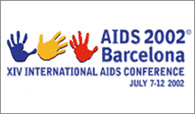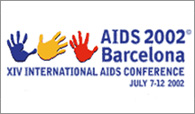A study found that more than 75 percent of young gay and bisexual men in major US cities who are infected with HIV are unaware they carry the virus.

Experts consider the finding to be a worrying sign that the epidemic could be in danger of accelerating again in the United States.
The study, which surveyed some 6,000 gay and bisexual men between the ages of 15 and 29 in Baltimore, Dallas, Los Angeles, Miami, New York, and Seattle from 1994-2000 indicated that ignorance of HIV status was more than three times higher than previous studies of people entering the military or jobs that require screening had estimated.
The study found that about 10 percent of the men tested positive for HIV and 91 percent of HIV-positive black gay and bisexual men, 70 percent of Latino gay and bisexual men, and about 60 percent of white gay and bisexual men were unaware that they were infected.
About half of all the men surveyed said they did not use condoms during anal sex because they did not believe they were at risk for HIV.
"The study may help explain why many young gay and bisexual men in the United States are becoming infected," said the CDC's Duncan MacKellar, who led the study.
MacKellar said in an interview with Reuters Health that the stigma of being tested for HIV remains a problem. In the current study, participants listed two primary reasons for not getting tested--they thought they were at low risk or they were "scared to learn the results."
Hundreds of thousands of gays are going untreated for HIV and may be spreading it unknowingly through unprotected sex, MacKellar added.
Ronald Valdiserri, deputy director of HIV, Sexually Transmitted Disease, and TB Prevention at the CDC said the study's findings signal a need to revive the urgency with which Americans confronted the AIDS epidemic and HIV prevention efforts in the 1980s and early 1990s.
Another CDC study presented at the conference, which examined anonymous blood samples of 40,000 high-risk patients of all ages, found that the rate of new infections for gay and bisexual men was nine times higher than for women and heterosexual men.
High-risk behaviour

"We were struck by the extent to which each of the health problems turned out to predict the other," Stall said.
The study showed that multiple drug use, partner violence, history of childhood sexual abuse and depression appear to increase high-risk sexual behaviour among gay and bisexual men in the US.
Of those who reported all four problems, 33.3% also reported high-risk sexual behaviours while of those who reported none of these problems, only 7.1% reported high-risk sexual behaviours. Similarly, HIV infection was reported by 25% with all four problems, compared with only 13% of those with none of these four other problems.
There seemed to be "an interlocking web" of health problems among the gay men in these cities, constituting "simultaneous epidemics that are feeding each other."
Overall, the HIV epidemic in this population is "intertwined with and fueled by other psychosexual health problems," Stall concluded. "One of the reasons why these men may not be able to respond to intervention campaigns is that they are dealing with these other problems."











 打印版本
打印版本










读者回应
抢先发表第一个回应吧!
请先登入再使用此功能。